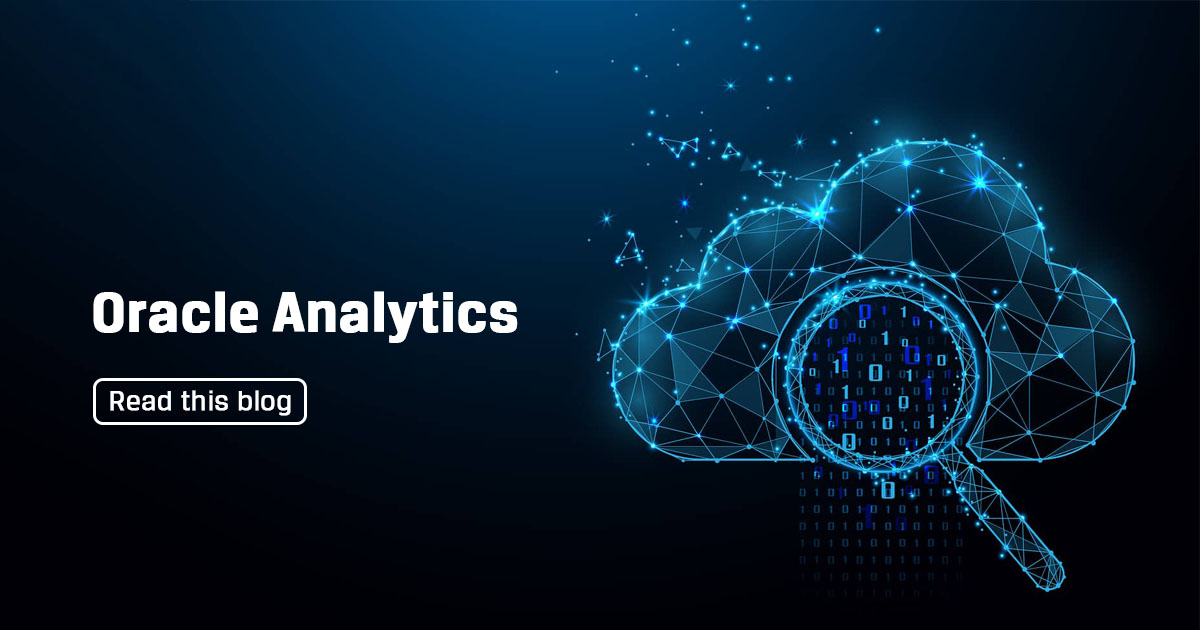

Analytics refers to the techniques used to analyze data to enhance productivity and business gain. It also enables applying data patterns towards effective decision making. Analytics is applied to business data to describe, predict, and improve business performance and allow for effective decision making. Oracle Analytics is technically the modern version of Oracle Business Intelligence Enterprise Edition (OBIEE). The change is primarily driven by the absence of self-service data visualization capabilities in OBIEE.
Oracle Analytics comes with extensive self-service features, and advanced AI/ML capabilities. It is an adaptable and secure Oracle Cloud service that provides a full set of abilities to explore and perform collaborative analytics for an individual, for a workgroup, or for an enterprise.

Oracle Analytics Cloud Features:
- Data Preparation – The Data Preparation part involves the selection of the different data points from various data sources for ingestion, identifying duplicates and removing redundant columns, cleaning up the spell errors ingested from your different data sources, etc. A quick example of data preparation is removing the rows with blank values for certain fields or replacing them with a standard value.
- Data Flow – The data transformation and standardization, aggregations come under the Data Flow feature. For example, we might want to analyze data from your CRM and HRMS. In the CRM, the state Punjab is stored as PB, whereas in HRMS, it is stored as Punjab. If we want to combine the data from CRM and HRMS for our analysis, we’ll have to standardize the State field for successful data integration.
- Data Visualization – The Data Visualization feature in Oracle Analytics Cloud helps users to analyze data visually and uncover insights from them. The data visualization feature is a major difference between OBIEE and OAC. OBIEE has limitations in terms of self-service data visualization, which is successfully addressed in OAC. Another exciting part of this data visualization feature is that Oracle Analytics Cloud automatically shows the insights that you’re interested in, based on AI.
- Data Collaboration – Data Collaboration is a feature required by enterprise customers. Oracle Analytics Cloud helps users in organizations collaborate and share data for insights. A report that we use could be useful for another user as well for making decisions. In that case, we can directly share the report with that user in Oracle Analytics Cloud. However, this is possible only if the other user also has access to the data we created in our report.
- Embeddability – Oracle Analytics Cloud also provides app developers to customize and embed OAC reports and analytics into their applications. This feature saves time for app users, as they don’t have to create a separate account or log in to OAC to see their report.
Components of Oracle Analytics Cloud:
- Oracle Data Visualization Cloud Service (DVCS) and Oracle Business Intelligence Cloud Service (BICS) – These are Data Visualization Systems that are available as Software-as-a-Service (SaaS). It allows us to maintain control over the domain while migrating to the cloud. Instead of copying the Data Models, the Business Intelligence Cloud will help us to reuse this component to develop visualizations in OAC.
- Oracle Smart View – Using this tool we can explore and integrate Oracle Analytics Cloud BI content with Microsoft Office applications. Users may examine, import, alter and share data in Microsoft Office Excel, Word and PowerPoint.
- Oracle Day by Day – This Analytics tool uses Artificial Intelligence (AI) to evaluate what we examine in OAC and automatically display reports and insights. Whatever the user searches for business data in the app, and then accordingly it generates the Data Insights in ready-to-use analytical chart cards.
- Oracle Essbase – This tool is designed primarily for Business Users and Data Analytics (BI) Professionals as it covers a variety of functions, including what-if analysis, budget analysis, forecasting, root cause analysis, and scenario planning. It also allows for Data Backup and Migration, as well as the distribution of application templates across any businesses.
OBIEE to OAC Migration:
Steps to Migrate From OBIEE 11g to OAC
- Start with downloading the Oracle Analytics Cloud migration tool JAR file.
- Copy the JAR file into your OBIEE 11g environment.
- Now run the migration-tool.jar file in the OBIEE environment. The tool exports all content from your OBIEE to a .jar file.
- Deploy the bundle into your Oracle Analytics Cloud environment.
- Log in to your OACS and verify the migration.
Benefits of Migrating to OAC
- Proven interactive dashboard & analysis platform with rich visualizations.
- Easy interface for creating reports.
- Cost is reduced and implementation is faster.
- Scalability is fast and easy
